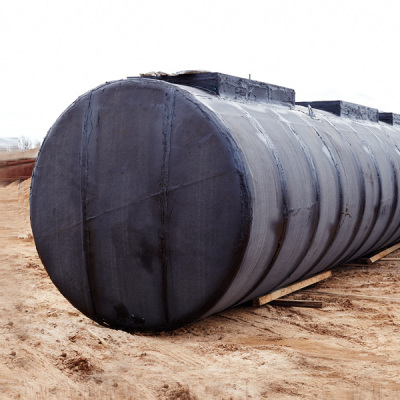Does your Underground Storage Tank make your site a Brownfield?
 A detailed Tank Management Plan will help you stay on top of regulatory compliance and tank maintenance.
A detailed Tank Management Plan will help you stay on top of regulatory compliance and tank maintenance. Underground storage tanks (USTs) often become a hurdle for landowners, buyers, lenders, and real estate professionals during real estate transactions and refinances. Of course, a site containing an UST is not necessarily a contaminated site, but of the estimated 450,000 brownfields in the United States half of them are expected to be contaminated by leaking underground storage tanks (LUSTs). All USTs have the potential to become an environmental concern. Over time tanks corrode or fail, which can lead to significant environmental liabilities. Since 1988, many USTs have been installed with leak detection and other systems in place to gauge the integrity of the tank, but sometimes these systems malfunction or fail. USTs often complicate redevelopment or reuse of a site because additional testing is almost always required.
Underground Storage Tanks and Site Assessments
Brownfields are sites in which the redevelopment is hindered by known or suspected contamination. Sites with USTs are unique because the presence of an UST automatically consitutes an environmental concern during an initial Phase I Environmental Site Assessment (Phase I ESA). A Phase I ESA is conducted to fulfill due diligence requirements during a commercial real estate transaction. It allows a buyer to make an informed decision based on the environmental risks associated with a property. The purpose of a Phase I ESA is to evaluate potential environmental releases of hazardous substances and petroleum products that have the potential to impact the site or may have impacted the site in the past. A Phase I ESA uses various mechanisms to investigate a site and its adjoining properties to draw conclusions about the environmental condition of the target property. It does not include environmental sampling to investigate the subsurface conditions. Even with leak detection systems in place, the condition of an UST cannot be confirmed from the surface. Leak detection system are excellent as warning devices, but they are known to occasionally malfunction. Since a UST’s integrity cannot be inspected during and environmental site assessment they are often identified as a recognized environmental condition (REC) during a Phase I ESA. Subsurface conditions often require further investigation as part of a Phase II Environmental Site Assessment.
How a lender or buyer interprets the risk associated with a UST often varies. On one end of the spectrum, a Bona Fide Prospective Purchaser or lender may consider the existence of a UST an elevated risk and request additional testing under a Phase II ESA to rule out the REC. On the other hand, if the tank was inspected regularly with no reported violations or releases they may forgo additional testing. It often comes down to the age of the tank, the warning systems in place, and the documentation concerning the integrity of the tank- among other things. To avoid a headache and save potentially thousands of dollars in testing and remediation the most prudent action would be to develop a Tank Management Plan, especially if you manage more than one UST.
Tank Management Plans
A facility with multiple USTs, or an organization with several buildings such as a school district or health care organization, has a better chance of preventing environmental risks associated with a UST by implementing a comprehensive Tank Management Plan. Not only that, it helps to ensure that your tanks, both above and underground storage tanks, are in compliance with federal, state and local regulations. A detailed tank management plan would include, at a minimum:
- UST inventory
- Insurance documents
- Storage tank specs and construction documents
- Operations and maintenance logs
- Inspection records
- Closure records
A tank management plan can help facility managers save in operations cost by being better equipped to address problems before they arise. And in the long run, this could potentially save you thousands in remediation costs if you readily follow and update the plan. A tank management plan is a tool to help facility managers stay on top of regulatory compliance and industry standards.
Underground Storage Tank Indemnification Fund
In addition to a tank management plan, it’s crucial that your tanks are insured. States often administer a UST insurance fund for regulated tanks, but unregulated tanks can often opt in if they meet specific requirements. In Pennsylvania, we recommend that you participate in the Underground Storage Tank Indemnification Fund (USTIF) so that you are covered in the event a release occurs. USTIF will reimburse eligible tanks owners for necessary expenses during environmental remediation, subject to a deductible. A tank must be registered with the appropriate regulatory agency to be eligible; however, unregulated heating oil tanks that hold 3,000 gallons or more are eligible for this insurance as well. Insurance coverage for each tank would also be tracked in a tank management plan. Element personnel have significant experience with successfully managing several tank remediation projects through USTIF on behalf of our clients.
Element’s staff has more than 15 years of experience in tank management, from compliance to closure and remediation. Our tank management plans will identify each UST’s compliance status and help you prioritize upgrades or replacement schedules based on associated risks, compliance costs and annual budget as necessary. It’s a valuable tool for facility managers to stay organized in a sea of regulations. If you have questions, or would like to learn more about tank management plans please contact Element.